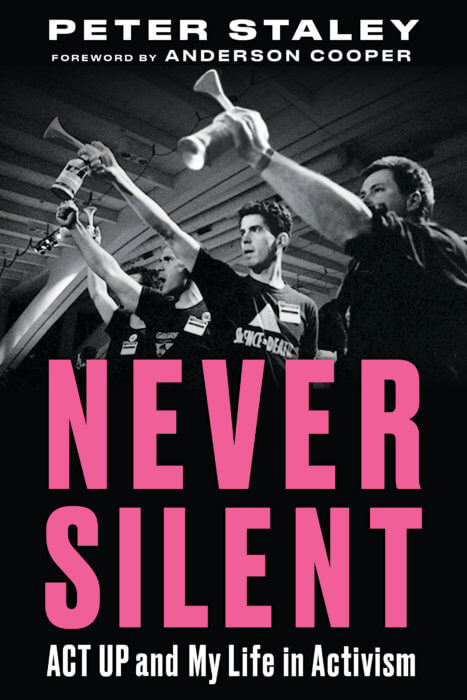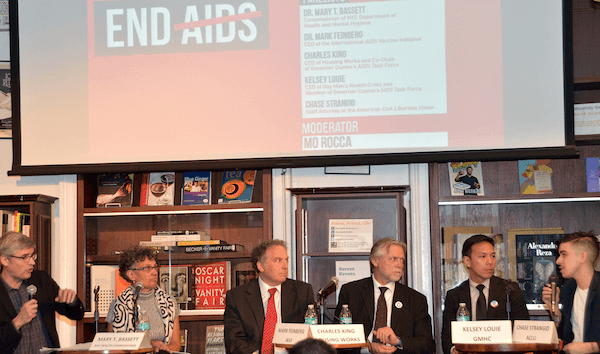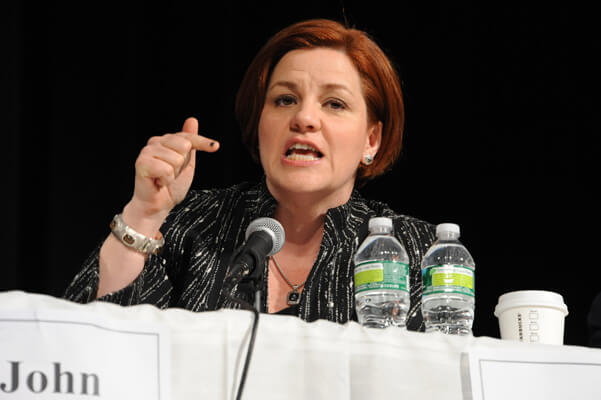Peter Staley’s memoir, “Never Silent: ACT UP and My Life in Activism,” opens with him arriving at his job at Morgan Guaranty where he was a government bond trader. A “young gay stud in 501 Levi’s and a black leather jacket” handed him a flyer announcing an ACT UP demonstration that was happening just a block away on that March morning in 1987. In a chapter titled “Wall Street Catharsis,” Staley writes that he attended his first ACT UP meeting a week later and then a year later “I would leave my job on disability and devote what time I had left to the activism I had watched on TV that night.”
At this time, Staley had known for just under two years that he had HIV, the virus that led to what was then called an AIDS diagnosis and the very real prospect of dying. He left Morgan and began working for another Wall Street firm where he was less successful. Then AIDS activism became his full-time job. In 1988, he joined a protest that briefly stalled the opening of the New York Stock Exchange.
This transition from Wall Street bond trader to AIDS activist should be an interesting perhaps even a compelling story. The catharsis should be apparent and emotion that compelled it should be evident. They are not. Using efficient prose, Staley discusses this part of his life, his childhood, and how he arrived at Wall Street and left that industry for ACT UP in the first roughly 70 pages of this book. We get the facts, but we are not drawn in. This is the problem with this memoir. It’s dull; it shouldn’t be.
The story of how an HIV-positive gay man abandoned what would likely have been a lucrative career in finance for AIDS activism should be interesting at a minimum. When you consider that this man believed he might be dead soon, that story goes from interesting to riveting. Or it should.

There are a few moments in this memoir that are exciting, such as Staley’s description of the stock exchange protest or another held at the North Carolina headquarters of Burroughs Wellcome, a pharmaceutical company that was selling AZT, an anti-HIV drug, for an excessive price. There are obvious stakes in those stories. Traders on the stock exchange floor wanted to attack Staley and his co-conspirators. They were protected by stock exchange security. At Burroughs Wellcome, the protestors sealed the doors to the office they seized. Police entered by breaking through the flimsy office walls. Staley made these moments gripping, so I could not understand why he was unable to do that in the rest of his memoir.
There are too many instances where Staley gives short shrift to topics that are interesting and deserve lengthier discussions, such as ACT UP’s protest in St. Patrick’s Cathedral in 1989 or how the organization lost some of its most talented members, including Staley, in a dispute in the early ’90s over continued engagement with the federal bureaucracies that regulate drugs and HIV research dollars. In fairness to Staley, these topics are worth a book of their own, but they required more in this memoir.
The story about Burroughs Wellcome received the attention it deserved and it included a bit of information that I was not previously aware of. In 1989, Staley and Mark Harrington, an ACT UP member who would eventually found the Treatment Action Group, along with Staley and others, flew to North Carolina to meet with Dr. David Barry, the company’s lead scientist in virology. Barry told the activists then that the “final real management of this disease is going to depend on multiple drug therapies, period.” That was true and the approval of drugs that used double or triple therapy began in the early ’90s. Those drug regimens have been highly effective against HIV.
Part of the problem with this book is that Staley chose to largely present his story in chronological order, so we are treated to 20 pages on his childhood in a chapter titled “Troublemaker.” If what we are to understand from this chapter is that throwing parties in your home when the parents are out of town or wrecking the family car can predict a life in activism, then American streets would be overflowing with activists protesting one cause or another. Staley’s childhood and his time at Oberlin were ordinary for any white, middle class American kid and they are more likely to predict an ordinary middle class life after college. That they did not produce that result in Staley’s life should be a story that engages us.
The 12th chapter, titled “Surviving Survivor’s Guilt,” seems like the end of this book, but then Staley offers another three chapters and an epilogue that read like an obligatory exercise in life after AIDS activism.
The fundamental error in this book is revealed in the Acknowledgments. Staley writes that it took him three years to complete what he called “my f**king memoir“ on social media.
“My problem was that I hate writing — like a serious lifetime loathing of it,” Staley writes. “I’ve selected jobs and careers that don’t require writing, such as bond trading or running a website (where I paid other people to do it).”
The solution to this problem is not to write your own memoir. The solution is to hire someone who enjoys writing to tell your story. That would produce an engaging book on a life and death topic that is inherently compelling, but Staley brags that he “never caved by using a ghostwriter.” He should have caved. This book reads like a long-form grocery list.
NEVER SILENT: ACT UP AND MY LIFE IN ACTIVISM | By Peter Staley | Chicago Review Press | $26; 288 pages

































